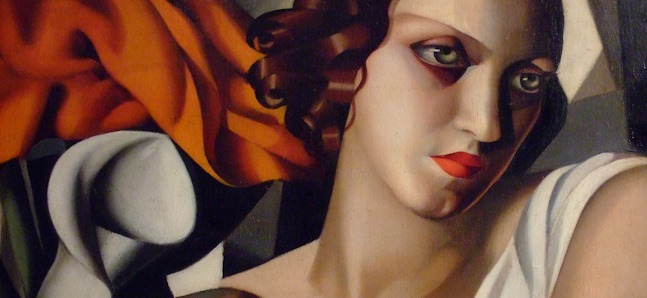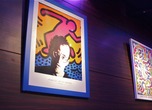Return of the Art Deco queen
De Lempicka’s restrained glamour hits Tokyo

Posted: Tue Mar 09 2010
She was a woman ahead of her time, with a controversial bisexual bohemian lifestyle. She was a member of the European jet-set with friends in high places. She was – above all – one of the most powerful female painters of the twentieth century, living long enough to experience the full sweep of an artist’s life cycle. Tamara de Lempicka was all these things, and more, as shown in the richly elegant ‘Tamara de Lempicka et son époque’ now exhibiting at Shibuya’s The Bunkamura Museum of Art.
From portrait-producing beginnings through to latter periods when well-known pieces were re-worked in a somewhat neo-impressionist manner, this survey is very much a ‘greatest hits’ of de Lempicka’s trademark style and themes. The cool and aloof yet ecstatic glamour of de Lempicka’s subjects attests to the collectability of her work: Madonna is among her biggest fans. Unsurprisingly, de Lempicka’s paintings and strong feminine aesthetic are heavily featured in the pop queen’s videos, most notably ‘Open Your Heart’.
Centred around what is arguably de Lempicka’s most famous work, ‘Mon Portrait’, a 1929 self-portrait of the artist behind the wheel of her beloved Bugatti, this exhibition illustrates not only the development of de Lempicka’s style, but also subtle shifts in subject and colour palette, as her life took her from Europe to the United States.
The exhibition also attempts – with limited success – to weave in the influence of de Lempicka’s family and friendships on the more esoteric aspects of her work. One ever-present influence addressed with particular acuity, however, is the famously volatile and complicated relationship between the artist and her daughter Kizette.
It’s difficult to discuss de Lempicka without mentioning fashion; Taschen editor Uta Grosenick posited that de Lempicka was ‘the first woman artist to be a glamour star’, paving the way for such fashion conscious creatives as Tracy Emin. One gallery finds de Lempicka striking poses worthy of a high-fashion magazine shoot, resplendent with hats from her collection.
Perhaps the most striking facet of de Lempicka’s career, as represented in the Bunkamura, is not the lush opulence of her most widely represented artworks (circa 1924-1933), but the gradual addition of more populist themes (the poor, blue collar workers and religious tones) that infused her works from 1931.
The final section of ‘Tamara de Lempicka et son époque’ is devoted to the latter part of the artist’s life, when, after adopting a softer aesthetic in her twilight years, the paintings of her youth regained popularity. Another wild-card shedding light on de Lempicka’s artistic process is a selection of lesser known sketches and studies for her more complex paintings. These are the exhibition’s true gems: standing out not only because of their muted style, but also because of the opportunity afforded to see the minute detail within an otherwise highly finished final product.
Whether a long time fan of de Lempicka, an admirer of ’20s and ’30s fashion, or someone interested in strong female figures, this is an exhibition not to be missed.
‘Tamara de Lempicka et son époque’ is on display at The Bunkamura Museum of Art until May 9, 2010.
Tags:
Tweets
- About Us |
- Work for Time Out |
- Send us info |
- Advertising |
- Mobile edition |
- Terms & Conditions |
- Privacy policy |
- Contact Us
Copyright © 2014 Time Out Tokyo











Add your comment